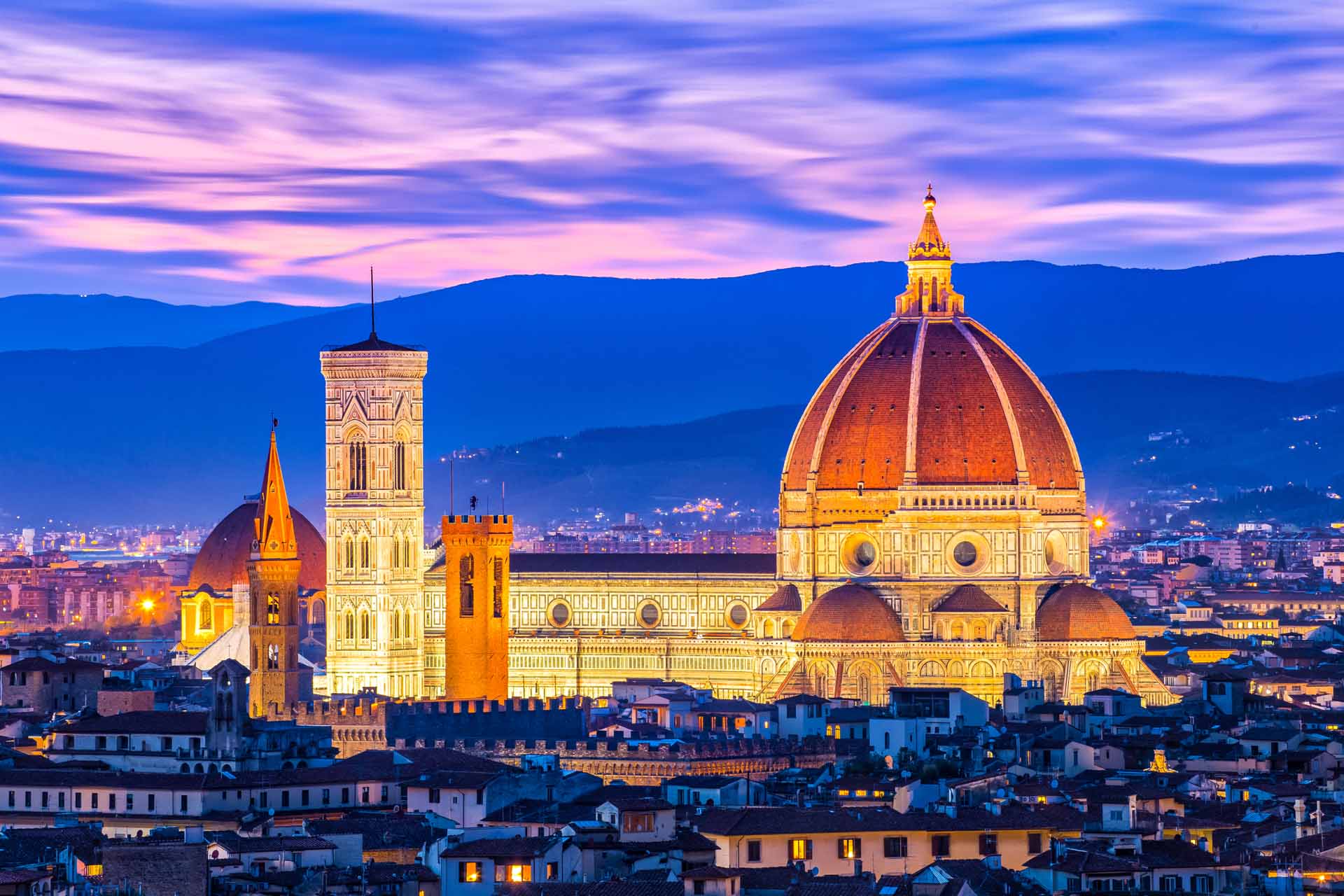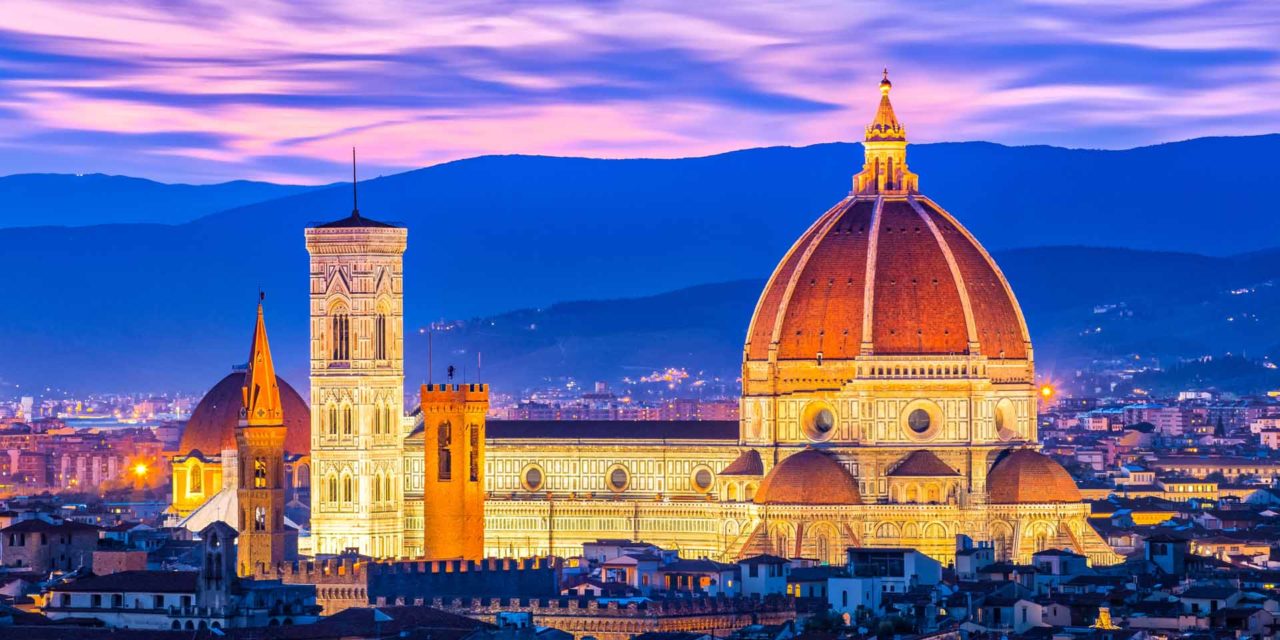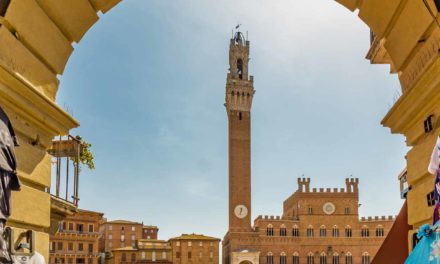
Why is Tuscany on almost everyone’s bucket list of places to visit in Italy? What is it about wandering around from hill town to hill town in Tuscany, passing through vast stretches of lush vineyards, that has such universal appeal? Why would you want to visit this idyllic part of the world yourself? And where should you go first in your wanderings?
To start with, Tuscany is steeped in history, dating back to the Etruscans in 900 BC, moving forward through Roman times to the contentious, art-enthused city states of the Middle Ages and Renaissance. Even today, the well-preserved towns and cities of Tuscany retain much of the charm and flavor of their pasts, offering time-machine-quality, first-hand experiences of days gone by. From Etruscan to Medieval to Renaissance to modern times, Tuscany has kept its own unique version of timelessness, all proudly displayed in its museums and churches, but, in equal measure, evidenced in the “living museum” of its streets and piazzas, buildings and art.
And speaking of art… Tuscany holds one of the greatest accumulations of art in the world—with the masterpieces of Michelangelo, Botticelli, Leonardo da Vinci and many others—bringing its history to life, illuminated through art and sculpture.
Add to this the over-the-top, built-to-impress, architecture of its colossally extravagant cathedrals, with multicolored marble façades, inlaid marble floors that took centuries to complete, and soaring domes that were their own miracles of design at the time they were built. As if any further embellishment could possibly be needed, these massive edifices hold numerous masterworks of sculpture, fresco and stained glass, all joining together in an obvious attempt to inspire awe in the populace and humble them into obedience.
Equally appealing are the characteristic experiences to be enjoyed throughout the region, in each Tuscan town or city, large or small. The excellent wine, locally produced… The delectable food… The excitement of the piazzas, spacious centers of living filled with people and bordered by lively outdoor cafés. The outdoor markets… Not to mention the gelato!
Tuscany and its Etruscan Heritage
The Etruscans were the first civilization of Tuscany, beginning in the eighth century BC, well before the Romans. The name “Tuscany” is derived from the term “Etruscan.” These were an advanced people, thought to be a melding of Greek immigrants and people indigenous to Italy. They built their well-fortified towns on hilltops, reclaiming previously unfarmable land by constructing water systems for irrigation. By 500 BC, Etruscan culture had spread across Tuscany, controlling much of central Italy, including Rome.
A wealth of Etruscan art and artifacts has survived across the centuries, preserved by being buried with the dead, as with the Egyptians. Etruscan tombs, composed of multiple chambers, are carved into the rock and furnished like a house for the next world, complete with food, jewelry and weapons. The Etruscans crafted exquisite, intricately delicate filigreed jewelry, reflecting a wealthy and sophisticated culture with refined tastes.
Each Etruscan town was its own independent city-state, with an autonomous government. Over the centuries, the towns banded together into three separate leagues, made up of 12 cities each. By the 4th century BC, the Etruscans were steadily losing power to the Romans, who ultimately brought about their demise. As Rome grew in power, it conquered and absorbed the Etruscan city states one by one until they vanished into the larger civilization Rome carved out for itself.
After the fall of the Roman Empire, Tuscany had a succession of rulers until the 12th-century when Tuscan cities gradually began to regain their independence as republics. By the Middle Ages, some of these cities became wealthy through commerce, trade and banking, including Florence, Siena and Pisa. But there was an almost perpetual state of rivalry, war and mayhem between the city states, each jockeying for power over the others. Gradually Florence took the lead over the others.
Five Places to Visit First in Tuscany
On your visit to Tuscany, you owe it to yourself to enjoy the full experience, balancing small, quaint towns with large, well-known cities. Start in the medium-sized city of Siena. Then hop about among the three small hill towns of Montepulciana, Cortona and San Gimignano. Save Florence for last.
Throughout your time in Tuscany, you will be perched on hilltops in enthralling, ancient towns, surrounded by gorgeous countryside, with vineyards and fields reaching out in every direction, as far as your eye can see. Travel about by train so your journey will be as much of a delight as your arrival. And determine to place as much emphasis on the being there as you do on seeing sights.
Start your wanderings in Siena… (coming next)


